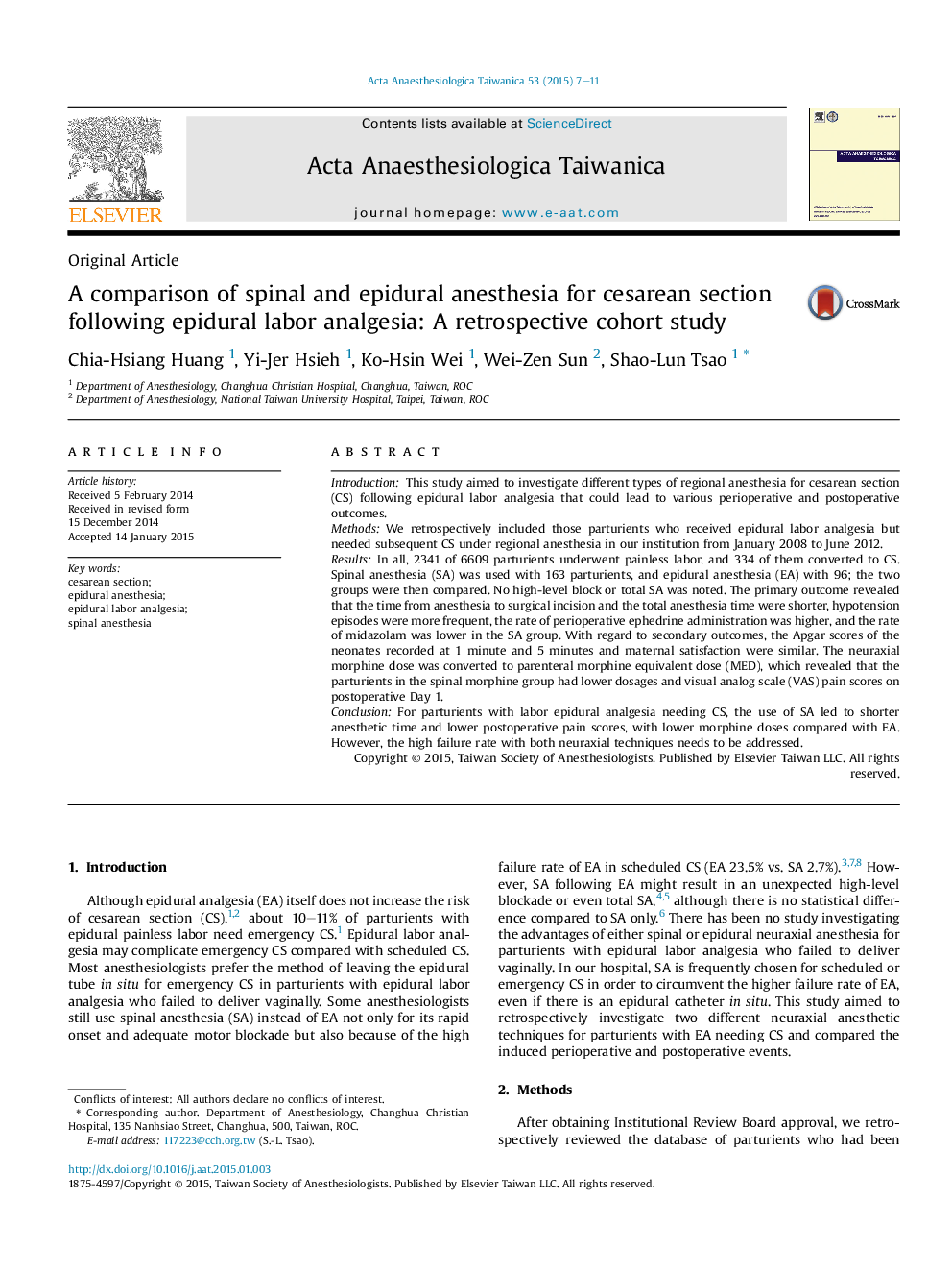| Article ID | Journal | Published Year | Pages | File Type |
|---|---|---|---|---|
| 2741355 | Acta Anaesthesiologica Taiwanica | 2015 | 5 Pages |
IntroductionThis study aimed to investigate different types of regional anesthesia for cesarean section (CS) following epidural labor analgesia that could lead to various perioperative and postoperative outcomes.MethodsWe retrospectively included those parturients who received epidural labor analgesia but needed subsequent CS under regional anesthesia in our institution from January 2008 to June 2012.ResultsIn all, 2341 of 6609 parturients underwent painless labor, and 334 of them converted to CS. Spinal anesthesia (SA) was used with 163 parturients, and epidural anesthesia (EA) with 96; the two groups were then compared. No high-level block or total SA was noted. The primary outcome revealed that the time from anesthesia to surgical incision and the total anesthesia time were shorter, hypotension episodes were more frequent, the rate of perioperative ephedrine administration was higher, and the rate of midazolam was lower in the SA group. With regard to secondary outcomes, the Apgar scores of the neonates recorded at 1 minute and 5 minutes and maternal satisfaction were similar. The neuraxial morphine dose was converted to parenteral morphine equivalent dose (MED), which revealed that the parturients in the spinal morphine group had lower dosages and visual analog scale (VAS) pain scores on postoperative Day 1.ConclusionFor parturients with labor epidural analgesia needing CS, the use of SA led to shorter anesthetic time and lower postoperative pain scores, with lower morphine doses compared with EA. However, the high failure rate with both neuraxial techniques needs to be addressed.
